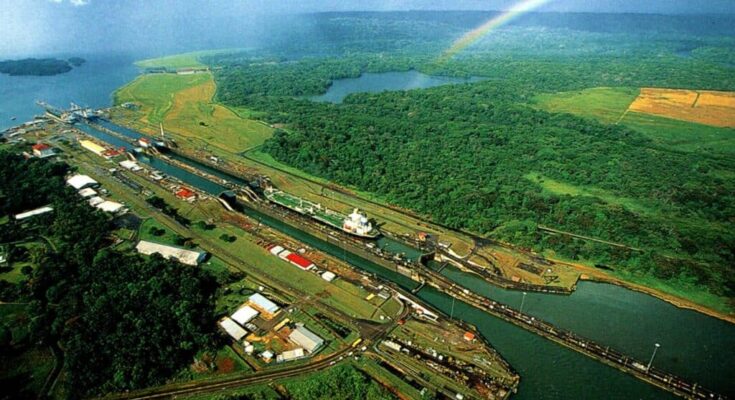
Mexico is building the Interoceanic Corridor railway to compete with the Panama Canal and ease international trade.
The new railway would aim to relieve the burden on the Panama Canal, which is struggling to receive shipments due to a drought. The Panama Canal has raised toll prices nearly eight-fold, and water levels at an all-time low make ship passage through the canal challenging.
Mexico’s Interoceanic Corridor
The $7.5 billion dollar project will stretch 188 miles across the Isthmus of Tehuantepec. The railway will move containers from ships to the train and transport them to ships on the other side that would complete the orders. The project is actually the revival of an old one, as the railway was opened in 1907, but it was abandoned after the Panama Canal went into service.
The Interoceanic Corridor will also serve to tackle poverty in Mexico. The railway’s path will weave through the Mexican states of Veracruz and Oaxaca. Both states suffer from some of the worst poverty in Mexico, so the Interoceanic Corridor could bring in much needed funding to improve infrastructure.
Passengers will be able to board the Interoceanic Corridor trains along with the shipping containers. The train will have ten stops across both states, with ports in the Atlantic and Pacific. The hope for the International Corridor is that it will link up to Tren Maya lines and eventually be able to reach Cancún.
According to Mexstrategy, The Mexican government has invested $6 billion, and the project has received about $2 billion from outside investors.
Competing with the Panama Canal
The Panama Canal has been the most crucial path for trade between the West and East for more than a century. It’s path through the country of Panama shortens the trips cargo vessels have to make by thousands of miles. The canal has reigned supreme since its inception, but now it’s vulnerable to projects like the Interoceanic Corridor.
Panama has been plagued with a drought in recent years, leaving Lake Gatúm with all-time low water levels. Lake Gatúm is vital to the Panama Canal, as the canal’s lock systems rely on the water from the lake to function. The conditions have left shipping companies with the choice of having to wait out at sea for up to two weeks or pay millions to skip the line and get across.
With the Interoceanic Corridor, companies could potentially not have to deal with the worsening conditions surrounding the Panama Canal. However, it is unclear whether the Interoceanic Corridor will be faster than the Panama Canal, as it takes time to pack and unpack ships and trains. Moreover, trains cannot carry as much as shipping vessels, reducing the amount of cargo that could be transported by railway.
In regards to competition, the Panama Canal said in a statement:
“This route remains the top choice for shippers because the Panama Canal maintains expedited access to more than 180 maritime routes that connect 170 countries via 1,920 ports. We are always monitoring potential projects that could compete with our route, though we remain confident in our service and are making investments to strengthen our services for years to come.”
Regardless of the competition, the Interoceanic Corridor could ease the burden on the Panama Canal, taking an estimated five percent of what normally goes through the canal.



